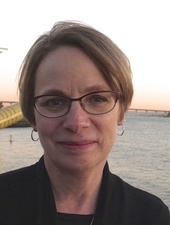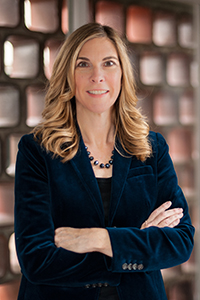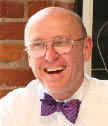Creating Sacred Space
Four perspectives on creating sacred space through the lenses of architecture, ritual, & social history, featuring Professors Victoria Young, Jeanne Kilde, Marilyn Chiat, & architect John Cuningham.
Date & Time:
7:00 PM - 8:00 PM
Location:
O'Shaughnessy Educational Center Auditorium

Marilyn J. Chiat received her Ph.D. in Art History from the University of Minnesota. Her dissertation on ancient synagogue architecture was published by Brown University under the title Handbook of Synagogue Architecture. Her focus is on the role religious architecture plays in their communities, providing insight into the history of their congregants and the larger cultural context in which they exist. She has published and lectured widely on this topic here and abroad. Among her other publications is America’s Religious Architecture: Sacred Places for Every Community, commissioned by the National Trust for Historic Preservation and published by John Wiley & Sons, The Sacred Traveler: Chicago and Illinois, part of the Sacred Traveler Series published by Paulist Press, and North American Churches from Chapels to Cathedrals, published by Publications International. She has also appeared in a number of public television documentaries including the Emmy Award winning “Iron Range: Minnesota Building America.”

Jeanne Halgren Kilde is the Director of the Religious Studies Program at the University of Minnesota. A cultural historian of religion in the United States, Kilde holds a Ph.D. in American Studies from the University of Minnesota. She teaches courses at the University on U.S. religious history, religious ritual and sites, and theory and method in the study of religions. Her primary research focus is on religious space and architecture. Among her publications are When Church Became Theatre: The Transformation of Evangelical Architecture and Worship (Oxford University Press, 2002); Sacred Power, Sacred Space: An Introduction to Christian Architecture (Oxford University Press, 2008);and Nature and Revelation: A History of Macalester College (University of Minnesota Press, 2010). Her recent work focuses on religious diversity and space in the U.S. Her article on the Islamophobic, “mosque in Manhattan,” situation in 2010, appeared in the online journal Religions in 2011. She is currently editing the Handbook of Religious Space and Place, for Oxford University Press, and working with Marilyn Chiat, Ph.D., on Houses of Worship in the Twin Cities, a digital research project examining interactions among religious and ethnic groups in the Twin Cities from 1849–1924. Kilde regularly addresses religious and community groups on subjects related to religious diversity and has appeared in such public forums as MPR’s The Daily Circuit with Keri Miller, and WCCO’s Steele Talkin’ with Jearnlyn Steele.

Victoria Young is professor of modern architectural history and chair of the art history department at the University of St. Thomas. Dr. Young is also second Vice President of the Society of Architectural Historians and is a former member of Minnesota’s State Review Board and the Governor’s Residence Council. Dr. Young¹s research focuses on nineteenth- and twentieth-century architecture, with special interests in sacred space and contemporary war museums. She has published on her work on Mount Saint Bernard Abbey in Leicestershire, England, a nineteenth-century monastic design by the English architect, Augustus Welby Northmore Pugin. Her current manuscript-in-progress is an exploration of the New York City-based firm of Voorsanger Architects’ design for the National WWII Museum in New Orleans, a building project begun in 2003 with completion expected in 2018.
Her award-winning book on the Abbey Church of Saint John’s analyzes the masterful collaboration between architect Marcel Breuer and associates, and their Minnesota Benedictine patrons. The book was included on Architectural Record’s 2014 Book Round Up (http://archrecord.construction.com/features/critique/books/2014/1412-Books-Roundup.asp) and it has been heralded by in a review by Norman Weinstein for ArchNewsNow as “the first great architectural history of the 21st century. http://www.archnewsnow.com/features/Feature463.htm

A practicing architect since 1962, John Cuningham founded Cuningham Group in 1968. His leadership, foresight and personal attention has helped grow the firm into a recognized leader in the field of architecture, including being awarded the American Institute of Architects-Minnesota Firm Award in 2013. Today, Cuningham Group has more than 350 employees and offices in Minneapolis, Los Angeles, Las Vegas, Biloxi, Denver, San Diego, Phoenix, Seoul, Beijing and Doha.
While emphasizing the need to produce architecture that reflects the needs and values of clients, John believes good architecture contributes to community life. Creating such architecture requires engaging both the client and the community in a dialogue. “I’m not as interested in the single building as I am in the community,” Cuningham explains. “Being a good architect — doing good architecture — has to do with being in service to society. The kind of architecture that interests me is the kind that builds community.”
John’s community-based approach is further underscored by his personal passion for sustainable design. As the firm approaches its 50th anniversary, John continues to advocate creating memorable places that respect the earth — an advocacy he has upheld throughout his professional career and many years before the rise of “green design.”
John has a degree in architecture from the University of Minnesota and a master of architecture from Harvard. He taught architectural design for 18 years at the University of Minnesota, served on the University’s Alumni Board, and continues to maintain a relationship with the College of Design, where he is a popular guest lecturer.